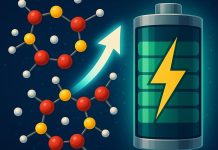
Perovskite solar cells are one of the most exciting new technologies in renewable energy.
They’re just as efficient as traditional silicon-based solar panels but much cheaper to make.
They’re also lightweight, flexible, and can be made semi-transparent—imagine windows or tents that generate electricity. But there’s a big problem: they don’t last very long.
These solar cells break down quickly when exposed to moisture and everyday temperatures, which has limited their use outside of labs.
Now, scientists at the Federal University of ABC (UFABC) in Brazil have found a simple way to make them last much longer—even when made under normal conditions.
In a study published in the journal Solar Energy Materials and Solar Cells, the research team showed that by tweaking the chemical formula of the perovskite material, they could significantly increase how long the solar cells stay effective.
Most perovskite solar cells are made with a compound called methylammonium (MA+), but the researchers found that adding another compound called formamidinium (FA+) made a big difference.
They created several versions of the material, each with a higher amount of FA+ added to the MA+-based perovskite.
Then they used these materials to make solar cells and tested them in typical room conditions with no special temperature or moisture controls—just like how they’d be made in a regular factory, not a high-tech lab.
The results were striking. Solar cells with no FA+ started to lose power almost immediately and completely failed within 30 days. But the cells with at least 25% FA+ kept working well even after 90 days, maintaining around 80% of their original efficiency.
Professor André Sarto Polo, who led the study, explained that this improvement happens because FA+ helps grow larger crystals in the material. Bigger crystals have fewer edges, and those edges are usually where water gets in and causes damage. With fewer edges, the material stays stable for longer—even in regular air and humidity.
This new method is not only simple and inexpensive, but it could also help bring perovskite solar cells closer to everyday use.
With greater durability and lower production costs, this approach could lead to solar panels that are cheaper to make, easier to install, and better for the environment.
Source: FAPESP.



